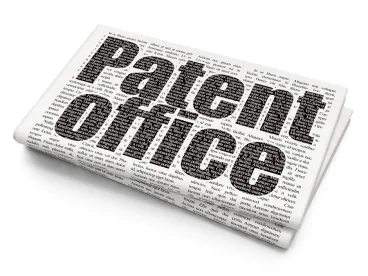While the Supreme Court decisions in Myriad and Mayo have been applied to diagnostic-type claims, method of treatment patents were thought to be safe from the recent judicial expansion of the patent-(in)eligibility doctrine. However, several decisions from the USPTO Patent Trial and Appeal Board (PTAB) have found personalized method of treatment claims ineligible under Mayo. Did the Supreme Court really intend to put such methods under the 35 U.S.C. § 101 knife?
The USPTO Patent Eligibility Guidelines
The USPTO Patent Eligibility Guidelines for examiners includes an example that relates to the diagnosis and treatment of a fictitious disease called “julitis” based on the detection of a newly identified protein marker called JUL-1. The guidance indicates that the following method of treatment claims withstand scrutiny under § 101:
A method of treating a patient with julitis, the method comprising administering an effective amount of anti-TNF antibodies to a patient suffering from julitis.
A method of diagnosing and treating julitis in a patient, said method comprising:
a. obtaining a plasma sample from a human patient;
b. detecting whether JUL-1 is present in the plasma sample;
c. diagnosing the patient with julitis when the presence of JUL-1 in the plasma sample is detected; and
d. administering an effective amount of anti-tumor necrosis factor (TNF) antibodies to the diagnosed patient.
Notably, these claims are found to be patent-eligible even though (i) the JUL-1 protein is naturally correlated with julitis (but the correlation was not previously known) and (ii) anti-TNF antibodies are both a “nature-based product” and a “conventional” therapy for julitis.
Patent eligibility is found for the first claim because the “administering” step does not implicate any § 101 issues, and the claim as a whole is “focused on a process of practically applying the [nature-based] product to treat a particular disease, and not on the product per se.”
Patent eligibility is found for the second claim because steps a, b and d place “meaningful limits on the use of the … correlation and critical thinking step” (step c). Thus, “[t]he totality of these steps including the recitation of a particular treatment … amount to more than merely diagnosing a patient with julitis and instructing a doctor to generically ‘treat it.'” The guidelines also not that “the combination of steps, which is not routine and conventional, ensures that patients who have julitis will be accurately diagnosed … and properly treated.”
Although the guidelines are not legally binding on the PTAB, it is disconcerting that the PTAB is dismissing them out of hand and rendering inconsistent decisions in ex parte appeals, as illustrated by the decisions outlined below.
Ex Parte Chettier
The claims at issue in Ex parte Chettier (Appeal No. 2016-003639) (decided Aug. 25, 2016) were directed to personalized methods of treating patients carrying newly discovered genetic markers associated with degenerative disc disease (DDD). The appealed independent claim is set forth below:
A method comprising applying at least one DDD condition therapeutic to a patient based on at least one DDD altered risk associated biological marker determined to be present in said patient.
On its face, the claim appears similar to the method of treatment claims deemed to satisfy § 101 in the USPTO’s julitis example, since it relates to a method of treatment that involves using a newly discovered marker to identify a patient population for treatment with a conventional therapy. Like the julitis claims, the Chettier claim as a whole seems focused on practically applying a natural correlation to treat a particular disease, and not on the natural correlation per se. Yet, the PTAB dismissed the USPTO’s Eligibility Guidelines out of hand, and found the claims to be invalid by analogy to the claims at issue in Mayo:
Appellants also argue that the claims pass muster under the USPTO’s 2014 Interim Eligibility Guidelines. (Appeal Br. 13-16.) However, as Appellants themselves acknowledge, the Guidelines “are not law.” (Id. at 13.) The Supreme Court’s interpretation of§ 101, on the other hand, is controlling case law, and under the standard set out in Mayo, claim 68 is not a patent-eligible method.
The PTAB compared the Chettier claim to those at issue in Mayo, and determined that “the addition of this conventional [treatment] step to the natural phenomenon or law of nature (a genetic marker associated with altered DDD risk) does not ‘transform unpatentable natural correlations into patentable applications of those regularities.'”
Would method of treatment claims reciting a more specific, but still conventional “DDD condition therapeutic” have fared any differently?
Ex Parte Atwood
The claims at issue in Ex parte Atwood (Appeal No. 2015-001611) (decided Aug. 16, 2016) were directed to personalized methods of treating Alzheimer’s patients based on newly identified genetic risk factors. A representative independent claim is set forth below:
A method comprising administering treatment to a patient at risk for developing Alzheimer’s disease (AD) or a patient diagnosed with AD, wherein the patient is homozygous or heterozygous for an Apolipoprotein E4 (APOE4) allele, and the patient has a single nucleotide polymorphism (SNP)…rs4073366, wherein the patient is homozygous for the cytosine allele (C-allele) or the patient is homozygous for the guanine allele (G-allele) at the polymorphic position of rs407336 ….
Again, the claim seems similar to the patent-eligible julitis claim, but again, the PTAB concluded that the claims do not “add enough” to the discovered natural correlation to satisfy § 101 under Mayo. In particular, the PTAB found:
Appellant’s claimed method does no more than identify a sub-population of patients with, or at risk of developing, AD and then administer exactly the same treatment to those patients as was done in the prior art for the entire population of patients with, or at risk of developing, AD. …. Appellant’s therapy administration step is not based on any identified correlation, because patients are administered exactly the same treatment regimen suggested by the prior art for any AD patient.
In reaching its decision, the PTAB noted the general nature of the treatment step, leaving open the possibility that claims directed to treating a specific patient population with a specific therapeutic regimen might be found to satisfy § 101.
Ex Parte Chamberlain
The claims at issue in Ex parte Chamberlain (Appeal No. 2014-009849) (decided Jan. 20, 2017) related to personalized methods of treating a bone disorder based on a newly discovered association between a genetic polymorphism and increased risk of bone disorder. A representative claims is as follows:
A method of treating osteoporosis in a human individual having a BMD T score of -1 or less, the method comprising:
determining in a nucleic acid sample obtained from the individual, the presence of a TT genotype at single nucleotide polymorphism rs2297480 (SNP rs2297480) in the farnesyl diphosphate synthase (FDPS) gene,
wherein the presence of the TT genotype is determined by hybridizing the nucleic acid sample to a nucleic acid probe which comprises SEQ ID NO: 1 or the complement thereof; wherein the probe or the nucleic acid sample is immobilized in a nucleic acid array, and;
administering intravenous [pamidronate] to the individual if the TT genotype is present in the sample.
These claims seem to hew even more closely to the patent-eligible julitis claims, since they recite a specific treatment. However, the PTAB found them ineligible under the two-step analytical framework outlined in Mayo:
[A]s to part one of the Supreme Court’s test, Appellants’ claim 1 is expressly directed to the law of nature discovered by Appellants—that the presence of the TT genotype at SNP rs2297480 is indicative that an individual having a bone disorder will respond to treatment with bisphosphonates.
As to part two of the Supreme Court’s test, the only other step in Appellants’ claim 1, administering bisphosphonate to the individual having the bone disorder, is a well understood and routine treatment step for such patients, as explained in Appellants’ Specification. See Spec. 1 (“Oral bisphosphonates are the commonest first-choice treatment where a reduction in osteoclasis would be beneficial, for example, for post-menopausal osteoporosis …..”).
Thus, at least in this case, reciting a specific, conventional treatment did not spare these personalized method of treatment claims from the § 101 knife.
Can We Get A Second Opinion?
Although the claims before the Supreme Court in Mayo included an “administering” step, the invention at issue was not directed to a method of treatment, but rather provided a method for optimizing the dose of a conventional treatment. Indeed, in Mayo the Supreme Court seemed to carve out method of treatment patents when it distinguished the claims before it from “a typical patent on a new drug or a new way of using an existing drug.” Subsequently in Myriad, the Supreme Court again distinguished the claims before it from method claims and “patents on new applications of knowledge about the BRCA1 and BRCA2 genes.”
Following these leads, the Federal Circuit noted in Rapid Litigation Management v. Cellzdirect (albeit in dicta) that method of treatment claims “recite processes to achieve a desired outcome,” and therefore are patent eligible. Thus, there is at least a chance–if not a likelihood–that the Federal Circuit would uphold personalized method of treatment claims similar to those the PTAB denied under § 101.
While stakeholders may be eager for more guidance on this issue, it could take some time before the Federal Circuit has an opportunity to weigh in on the eligibility of personalized method of treatment claims, and even longer for the Supreme Court to give a more definitive “second opinion.” Until then, Applicants will have to convince examiners and/or the PTAB that their personalized method of treatment claims indeed “add enough” under Mayo to warrant the patent protection that can foster investment and innovation in personalized medicine.





 />i
/>i

